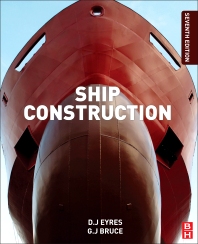Books in Naval architecture
Books in Naval architecture

Geometry for Naval Architects
- 1st Edition
- Adrian Biran
- English

Radar Propagation and Scattering in a Complex Maritime Environment
- 1st Edition
- Christophe Bourlier
- English

Commercial Ship Surveying
- 1st Edition
- Harry Karanassos
- English

Hybrid Ship Hulls
- 1st Edition
- Vladimir M. Shkolnikov
- English

The ROV Manual
- 2nd Edition
- Robert D Christ + 1 more
- English

Muckle's Naval Architecture
- 2nd Edition
- W. Muckle + 1 more
- English

Introduction to Naval Architecture
- 5th Edition
- E. C. Tupper
- English

Ship Construction
- 7th Edition
- George J. Bruce + 1 more
- English

The Maritime Engineering Reference Book
- 1st Edition
- Anthony F. Molland
- English

Reservoir Engineering Handbook
- 3rd Edition
- Tarek Ahmed
- English